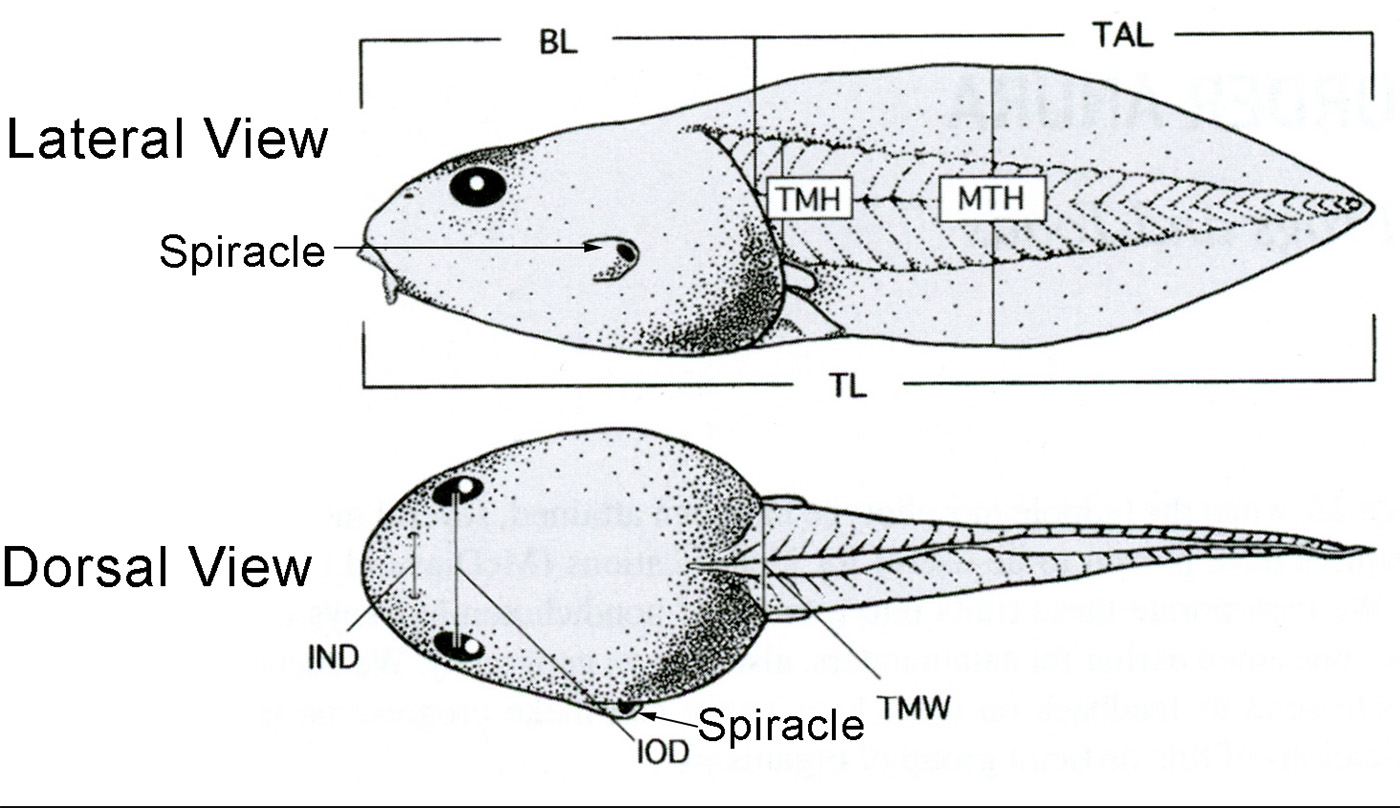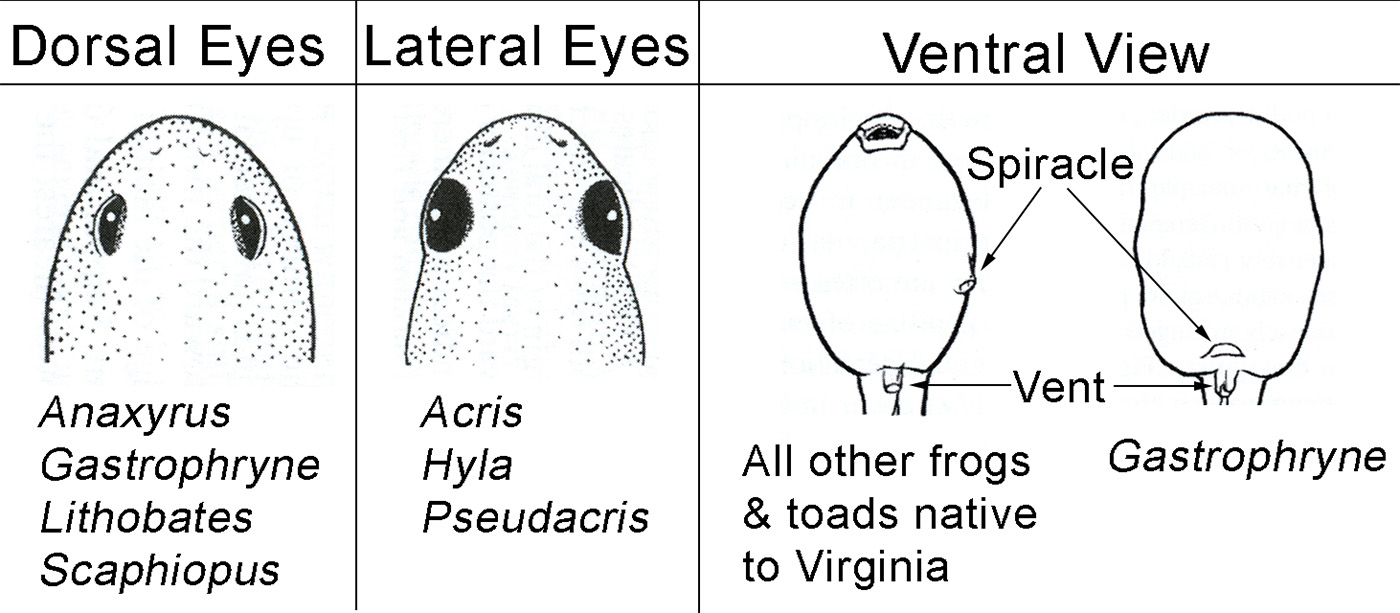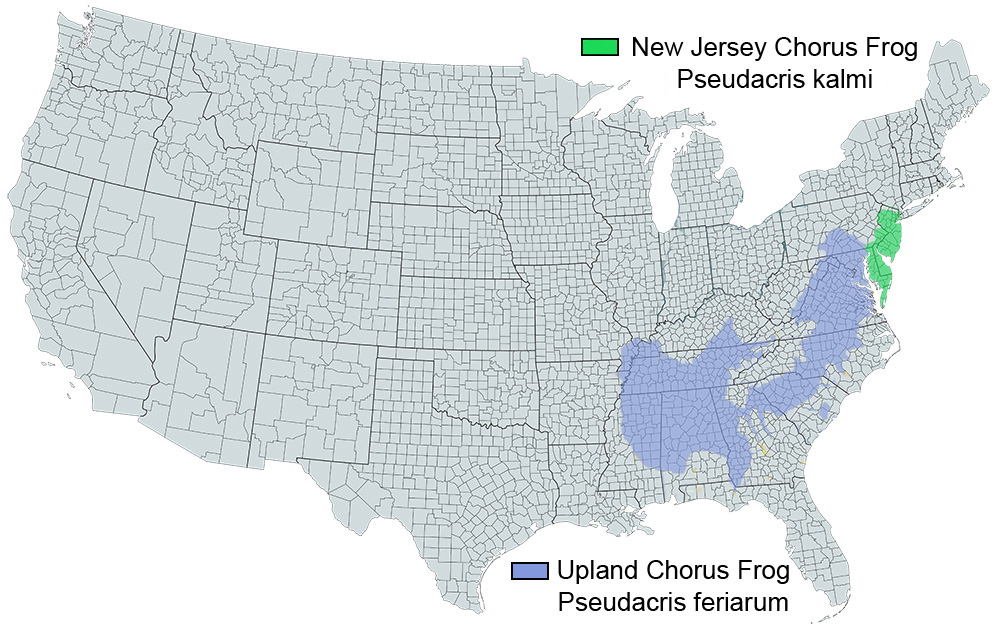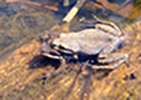New Jersey Chorus Frog
Pseudacris kalmi
Common Name: |
New Jersey Chorus Frog |
Scientific Name: |
Pseudacris kalmi |
Etymology: |
|
Genus: |
Pseudacris is derived from the Greek words pseudes meaning false and akris meaning locust. |
Species: |
kalmi is in honor of Pehr (=Peter) Kalm (1716-1779) |
Average Length: |
0.8 - 1.5 in. (2.9 - 3.9 cm) |
Virginia Record Length: |
|
Record length: |
Virginia Wildlife Action Plan Rating Tier IV (Moderate Conservation Need) - The species may be rare in parts of its range, particularly on the periphery. Populations of these species have demonstrated a significant declining trend or one is suspected which, if continued, is likely to qualify this species for a higher tier in the foreseeable future. Long-term planning is necessary to stabilize or increase populations.
Physical Description - This species is generally more robust than the upland chorus frog which ranges in size from 1.9 to 3.9 cm (3/4 to 1-1/2 inches). Dorsal stripes are broad and well-defined. There is also a dark lateral stripe that runs from snout to groin. This stripe is variable. There may also be a dark triangle or other dark figure between the eyes. There is always a light line on the upper lip. The dorsal ground color varies from pale gray to dark brown but may also be a dull green or olive. The markings are a darker shade of gray. The ventral surfaces are whitish and are either plain or sparsely spotted. The best means to distinguish this species from other Pseudacris triseriata subspecies is geography. In Virginia, this species is limited to the Eastern Shore/Delmarva Peninsula.
Reproduction - This species breeds in early spring from February to about April. It requires shallow bodies of water for breeding and tadpole development. The male's mating call is a vibrant, repeated "crreek" or "prreep" that rises in pitch and speeds up near the end and is compared to the sound of running a finger along the fine teeth of a comb.
Behavior - This species requires shallow bodies of water for breeding and metamorphosis.
Origin - Native
Aquatic/Terrestrial Associations - This species is found in a wide variety of habitats including areas that are dry and/or heavily affected by human activities. Shallow bodies of water are required for reproduction and tadpole metamorphosis.
Tadpoles:

| Lateral View | Dorsal View |
|---|---|
| BL = Body Length | IND = Internarial Distance |
| MTH = Maximum Tail Height | IOD = Interorbital Distance |
| TAL = Tail Length | TMW = Tail Muscle Width |
| TL = Total Length | |
| TMH = Tail Muscle Height |

Altig & McDiarmid 2015 - Classification and Description:
- Eastern Mass
- Arrangement 3 - Capsular chambers absent, so ova centered in
inner jelly layers mass usually 45 mm diameter or less (note: particularly
difficult group with minimal data).
- Sub-arrangement C - Ovum Diameter 0.6-0.8 mm; Egg Diameter 1.2-2.0 mm.
- Arrangement 3 - Capsular chambers absent, so ova centered in
inner jelly layers mass usually 45 mm diameter or less (note: particularly
difficult group with minimal data).
Life History Comments - Some of the life history information given above was taken from descriptions for the Western Chorus Frog (Pseudacris triseriata triseriata). Discriminating between the subspecies of Pseudacris triseriata is largely defined through geographic distribution
References for Life History
- Altig, Ronald & McDiarmid, Roy W. 2015. Handbook of Larval Amphibians of the United States and Canada. Cornell University Press, Ithaca, NY. 341 pages.
- AmphibiaWeb. 2020. University of California, Berkeley, CA, USA.
- Conant, Roger and, Collins, John T., 2016, Peterson Field Guide: Reptiles and Amphibians, Eastern and Central North America, 494 pgs., Houghton Mifflin Company., New York
- Duellman, William E. and, Trueb, Linda, 1986, Biology of Amphibians, 671 pgs., The Johns Hopkins University Press, Baltimore
- Martof, B.S., Palmer, W.M., Bailey, J.R., Harrison, III J.R., 1980, Amphibians and Reptiles of the Carolinas and Virginia, 264 pgs., UNC Press, Chapel Hill, NC
- Wilson, L.A., 1995, Land manager's guide to the amphibians and reptiles of the South, 360 pp. pgs., The Nature Conservancy, Southeastern Region, Chapel Hill, NC
Photos:
*Click on a thumbnail for a larger version.
Verified County/City Occurrence
Accomack
Northampton
CITIES
Verified in 2 counties and 0 cities.
U.S. Range







